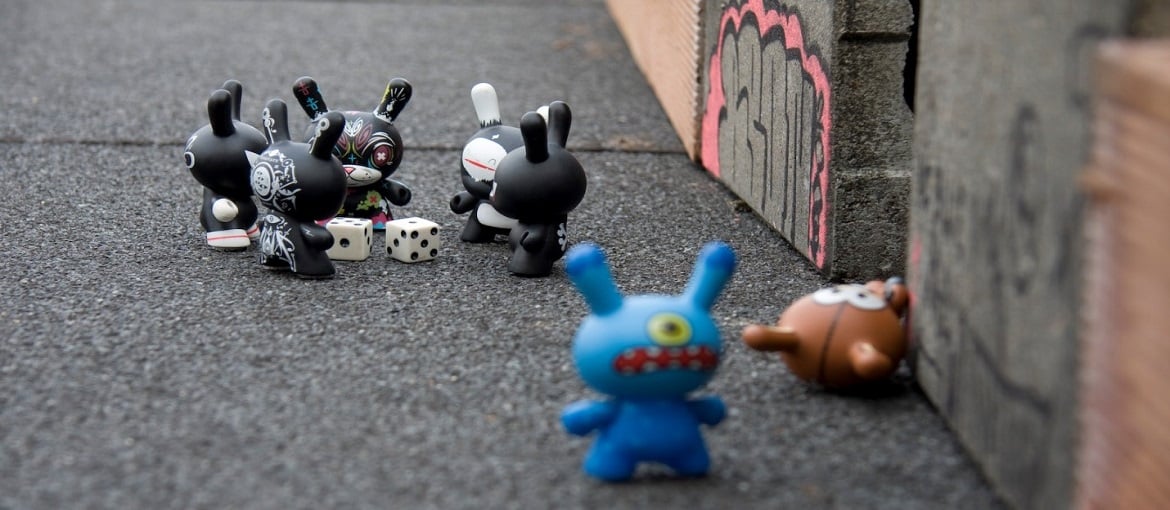Table of Contents
Animation has always been a fascinating world of experimentation and creativity.
It is often considered a spin-off from cinema, but in actual fact it appeared a long time before the Lumière brothers’ invention. Its origins lie in the raft of ingenious techniques and technologies used by storytellers and entertainers to inspire wonder in their audience before the invention of the cinematograph: from ancient Chinese shadow puppets to more modern tools like zoetropes and optical theatres. And animation’s underlying aim is the same now as it always was: to excite and amaze viewers.
With this in mind, we’ve decided to dedicate a short article to animation, to help you put your feet up and find inspiration. We’ve collected together various techniques used for the art form, from the most mainstream to those requiring painstaking craftsmanship, illustrated by what we think are the best examples of the genre online.
We hope you enjoy it!
Stop motion
Almost everyone has heard of stop motion. It’s one of the most commonly used and most popular animation techniques in the cinema world; indeed, one of the first people to use it was George Méliès – one of the founding fathers of the seventh art – who adopted it for his 1902 film A Trip to the Moon.
The technique itself is very simple: it involves photographing objects, drawings, puppets or people in a series of poses, changing the position or small details each time. When these frames are shown to the human eye at high speed (12 or 24 frames a second) they give the impression of movement, with an inimitable style.
The beauty of this technique is that it provides unlimited scope for creativity. Take, for example, Italian street artist Blu, who decided to animate enormous pieces of graffiti and urban objects in his work Big Bang Big Boom.
But many established directors have used stop motion too. One example is Tim Burton, who in 1993 used it in his festive film The Nightmare Before Christmas, bringing a technique that had seemed destined to vanish with the advent of 3D animation back into vogue. An incredible 227 puppets were built and animated to create the film.
Someone else with close ties to stop motion is the French director Michel Gondry, best known for the music videos he created for bands like Daft Punk and Chemical Brothers. In this video, made for the American group White Stripes, he decided to use stop motion to bring Lego to life.
Petrov’s ‘living painting’
The Russian director and animator Aleksandr Petrov invented his own unique stop motion animation technique, ‘living painting’, and it went on to earn him an Oscar for best animated short film.
Petrov’s technique involves creating images by spreading oil paints with his fingers across an illuminated transparent surface, photographing them and then altering them immediately for the next photo. It is a complex and time-consuming endeavour – Petrov revealed that, when things go to plan, he can produce roughly 15 drawings a day. For The Old Man and the Sea, Petrov’s most famous short film, for which he won his Oscar in 1999, the artist worked for three years on 29,000 frames. Given the end result, we’re all pleased he took the trouble!
Scratched pastels: an Italian handcrafted technique
As we have seen, patience is an essential attribute if you want to be a good animator, and this is proven once again by the work of another top animation director, this time from Italy. Simone Massi is considered one of the leading independent animators in the country, with over 200 prizes to his name from major national and international festivals. He creates short and feature-length films using his own, unusual technique – he draws with oil pastels on paper and then scratches his work with drypoint needles and other engraving tools. Each frame is photographed and then animated in sequence. Like Aleksandr Petrov’s technique, it is a variation of stop motion animation.
Between 2012 and 2016 Massi created the opening sequences for the Venice Film Festival. His 2012 work About Killing the Pig won the David di Donatello award for best short film.
Computer graphics
Twenty years ago, it seemed that computer graphics were poised to sweep away all other competing animation techniques. It hasn’t worked out that way, as we’ve seen, and the animation world has remained as rich as ever in terms of the topics tackled and the styles and techniques used. Nevertheless, digital animation is undoubtedly the sector that has seen the biggest technical advances and the most investment in recent years. As a result, some of the films we all know and love were produced using computer graphics.
It all began in 1995 – the year zero of digital animation – with the release of Toy Story, which heralded the start of the domination of the sector by Pixar Animation Studios. Toy Story was the first feature-length animated film made entirely with computer graphics, and it was followed by numerous titles which have now become cult classics, from Finding Nemo to Inside Out.
But alongside the success of Pixar, numerous businesses of all sizes have taken advantage of the opportunities provided by computer graphics to tell stories both great and small. Take Alike, for instance, an animated short film created by Daniel Martínez Lara and Rafa Cano Méndez that offers a sweet take on the importance of emotions. Created using computer animation, using free and open-source software, it was awarded the Goya Award for best animated short film in 2016.
How about you? Do you have any favourite animated works to add to our list?

